Chevron has been talking a lot about cows lately. Alongside POLITICO articles about clean energy, in D.C. newsletters, on Facebook and LinkedIn, are Chevron’s recent ads featuring taglines like “We’re looking to turn the methane from cow  into the fuels of the future.” Each ad links to a page on Chevron’s website which explains how methane captured from manure is actually “renewable natural gas.”
into the fuels of the future.” Each ad links to a page on Chevron’s website which explains how methane captured from manure is actually “renewable natural gas.”
But Chevron isn’t the only one talking cow manure. As world leaders convened in Egypt last November to negotiate climate action at the United Nations COP27 summit, a dairy industry trade association also ran a social media campaign highlighting efforts to “upcycle methane” from cattle. The ads showed anaerobic digester machines capturing methane emissions from manure and turning it into biomethane, which can be upgraded into natural gas. The public relations behemoth Edelman, which has come under fire for its work for the oil industry, created Facebook, Twitter, and even TikTok ads for this campaign.
The dairy industry is facing rising media scrutiny for its products’ carbon footprint and consumers are flocking to plant-based milk alternatives. And so dairy groups have put their public relations and lobbying might behind framing anaerobic digesters as the key to reducing their climate impact.
Both the fossil fuel industry and the dairy industry are advertising anaerobic digesters as a solution to high climate emissions, but they see the technology’s potential very differently. For dairies, the tarps that trap methane from decomposing liquid manure allow them to reduce emissions without reducing milk production. But the natural gas industry is much more interested in the gas that results from this trapped methane. Natural gas utilities are telling customers that digesters can help them achieve a far more ambitious goal: lowering emissions from the gas supply.
“I get very frustrated when I see the gas companies talking about how these projects are decarbonizing their pipeline,” Michael Boccadoro, the executive director of Dairy Cares, a dairy trade industry association in California, told DeSmog. “Nothing could be further from the truth.”
“The gas utilities in California — PG&E and SoCalGas try to take credit every time a new project comes online that this is somehow decarbonizing their gas system and it’s not,” Boccadoro added.
When Manure Turns a Profit
California provides one fifth of the country’s milk. Much of the California dairy industry, including Land O’Lakes and the California branches of the American Farm Bureau Federation and the National Cattlemen’s Beef Association, are members of Dairy Cares. They also face the strictest state methane regulations in the country.
Cow manure and burps release methane, a potent greenhouse gas that is 25 times more powerful at trapping heat in the earth’s atmosphere than carbon dioxide over a 100 year period.
Methane emissions from the agriculture sector have been growing since 1990. It’s not easy to significantly reduce methane from cow burps without reducing herd size. Instead, anaerobic digesters address the methane emissions released from livestock manure, which made up nine percent of U.S. methane emissions in 2020. California has incentivized anaerobic digesters to reach its methane reduction goals, and dairies, as the biggest source of manure-related methane, are home to most U.S. digesters.
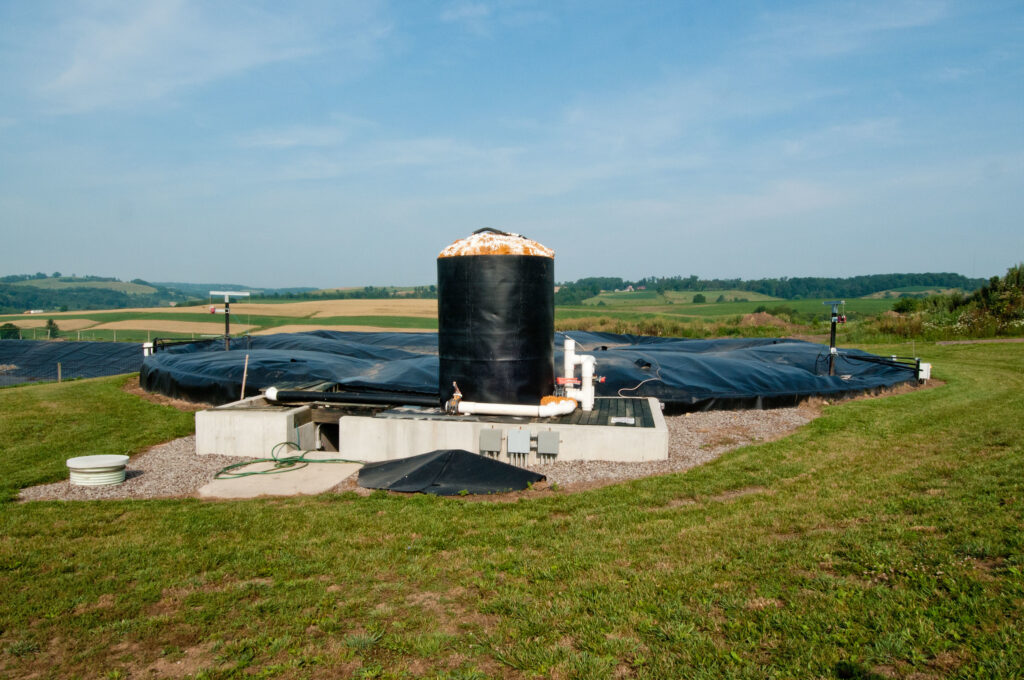
California’s Low Carbon Fuel Standard (LCFS) acts as a marketplace for the gas captured from cow manure. The California Air Resources Board (CARB) rates this gas as a negative carbon intensity fuel, because it counts the methane captured by the digester from cow manure as an avoided greenhouse gas emission. Dairies get credits from selling this gas to the LCFS, and oil refineries and distributors have to buy these credits since their product is rated over CARB’s carbon intensity limit.
The biomethane gas from dairies is often supplied to consumers just like fossil natural gas. And it releases greenhouse gas emissions just like fossil natural gas, too.
Related: An Introduction to Anaerobic Digesters and Biogas on US Farms
By scoring the lifecycle emissions of natural gas from digesters as negative, however, CARB gives dairies a way to make money in the LCFS market and a reason to participate in it. “If we were regulated as [the environmental justice community] would like us to be, then the life cycle would be different and it would not be avoided methane. Then that carbon intensity score would be much different,” Boccadoro told DeSmog.
“The Chevrons of the world, they can bank credits to use in future years and all the — what are called deficit generators, or the folks that have to buy the credits, they’ve all pretty much got years of credits already banked up,” Tyler Lobdell, a lawyer at Food and Water Watch, told DeSmog.
Because natural gas utilities are not required to buy these credits, they only pump the gas produced on California dairies through their pipelines. “They’re not paying for anything. They’re not partnering with us. They’re just a transmission company for us,” Boccadoro says.
Even so, utilities are staking their future on this gas. In early 2022, as local governments implemented natural gas bans for new buildings, the American Gas Association (AGA) released a report that stated that “often these approaches have been pursued without… assessing the decarbonization opportunities across the natural gas value chain.” It went on to lay out ways to continue supplying its customers with fossil gas through 2050, noting that “any pathway to net zero will also require significant increases in renewable and low carbon gas.”
Instead of shifting away from fossil fuels, gas utilities — and the gas companies that supply them — are pushing for an enormous expansion of the type of biomethane gas production that comes from capturing methane.
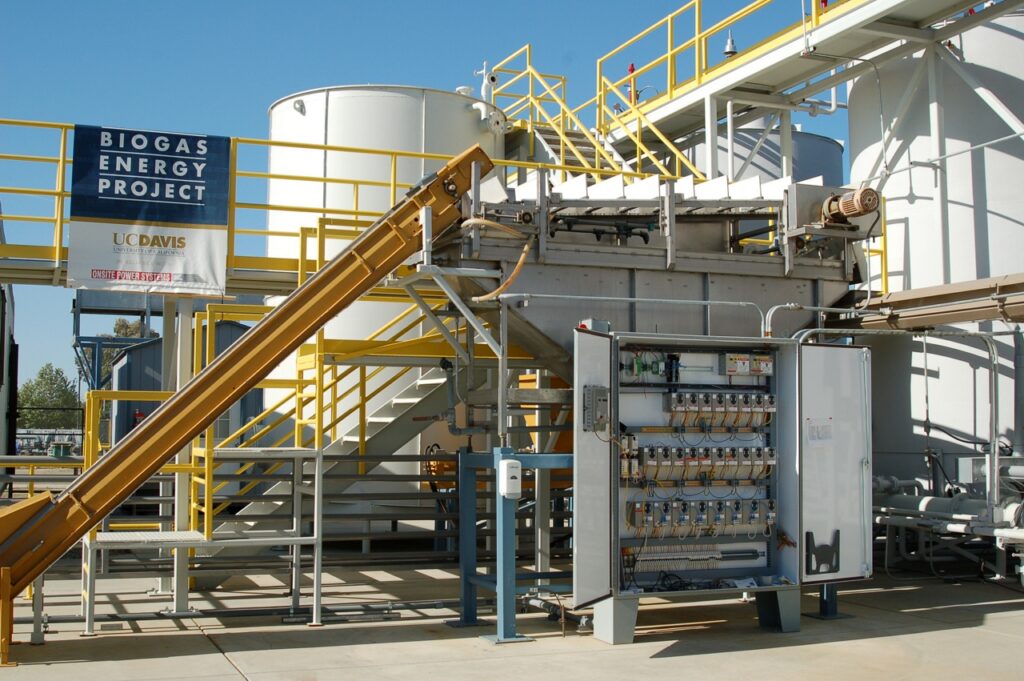
In its February 2022 report, the AGA claimed that about 6 quadrillion British Thermal Units (BTUs) of biomethane from manure, landfills, and wastewater treatment sites would be needed by 2050 to keep the gas industry in a net-zero economy. That’s equivalent to replacing nearly 20 percent of the U.S.’s gas consumption last year with biomethane. The AGA assumed that CO2 emissions from biomethane would equal zero, claiming that this assumption follows the Intergovernmental Panel on Climate Change’s precedent.
“The projections that the American Gas Association makes, which tend to get more optimistic with each passing year, really do assume that you’re going to capture every single source of potential biogas,” Caleb Heeringa, the campaign director of Gas Leaks, told DeSmog. Gas Leaks is a Climate Nexus project focused on highlighting the dangers of the natural gas industry.
“More than 500,000 new buildings per year get hooked up to gas,” Heeringa added. “There really is no viable way where quote unquote renewable natural gas could ever serve that added growth, much less displace a significant amount of the current gas use.”
The American Gas Association did not respond to requests for comment.
Biomethane: The Gas Industry’s Last Hope?
So if biomethane likely isn’t viable at scale, why is the fossil fuel industry interested in it?
In March 2018, a year before Berkeley, California, became the first city in the country to ban natural gas hookups for new buildings, the AGA held a meeting with gas utilities. There, members suggested to other utilities that they advertise “renewable natural gas,” the industry’s term for biomethane, to their customers.
Internal notes from the meeting obtained by the Climate Investigations Center revealed that National Grid, a gas and electric utility serving New York and Massachusetts, gave a presentation on how biomethane could “mitigate the opposition’s fervor against infrastructure expansion.” At the time of the presentation, National Grid was facing backlash for its gas pipeline expansion projects.
SoCalGas, the U.S.’s largest gas utility, has led the push to market biomethane as a climate friendly version of natural gas. The stakes are high for SoCalGas, which unlike California’s other utilities relies entirely on natural gas for revenue. Since 2019, more than 50 local governments across the state have banned natural gas hookups in new buildings.
SoCalGas claimed in 2019 that replacing 20 percent of its gas supply with “renewable natural gas” would equal the emissions reductions of electrifying all existing buildings in the state.
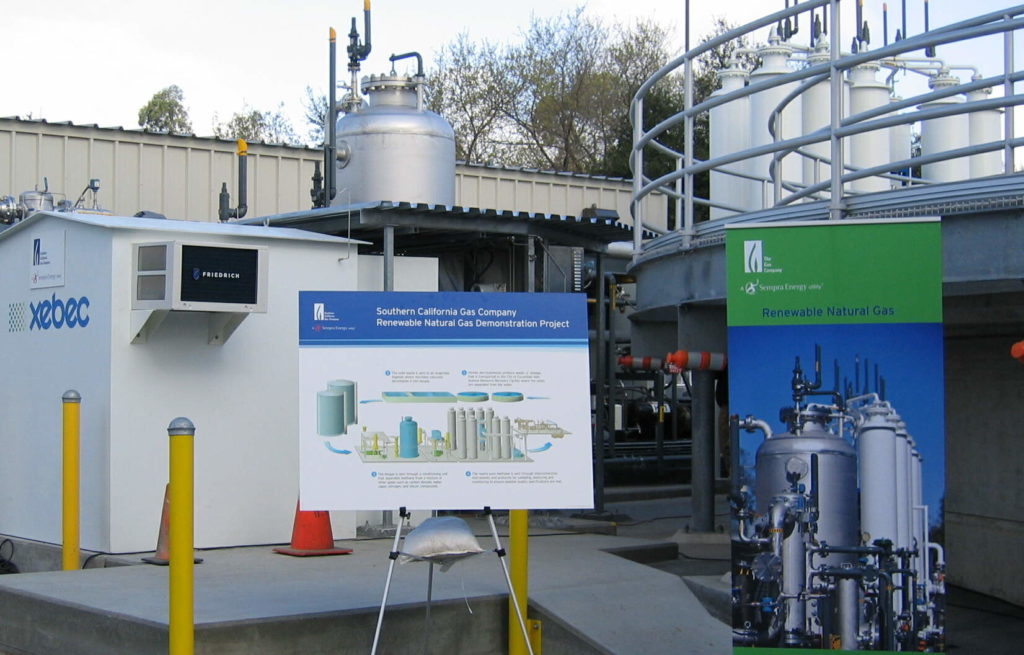
That year, SoCalGas used ratepayer funds to set up Californians for Balanced Energy Solutions (C4BES), an advocacy group intended to “tell the public and the media about the importance of natural and renewable natural gas,” according to emails between SoCalGas officials and the C4BES board chair. The group dissolved in 2021 after SoCalGas’ involvement and other scandals were revealed, but provided an example for other gas utility-funded groups opposing electrification beyond California.
Three years later, the Energy Solutions Center, a natural gas trade association, organized a meeting with 15 gas utilities to come up with a strategy to fight electrification.
Internal documents obtained by E&E News show these utilities — Atmos Energy, DTE Energy, Exelon, Enbridge., Eversource, FortisBC, Montana-Dakota Utilities Co., the Municipal Gas Authority of Georgia, National Fuel Gas Co., SoCalGas, South Jersey Gas, Spire Inc., Summit Utilities Inc., UGI Corp., and Washington Gas — planning a marketing campaign positioning biomethane as an alternative to electrification. Experts say that building electrification is crucial to reaching the U.S.’s net zero goals.
Eversource, New England’s largest utility, presented a slide at the March 2021 meeting that said “Natural gas (fossil fuel) in for fight of it’s [sic] life” and “Renewable Nat Gas is coming (likely will save NG business).”
Lobdell of Food and Water Watch says that calling biomethane clean energy is one of the most egregious “greenwashing scams” he’s encountered. Last year, he represented California residents in a petition to remove biomethane from livestock operations from the state’s LCFS. The petition argued that the marketplace encourages unsustainable factory farming because it pays large dairies to produce as much biomethane — and therefore liquid manure — as possible.
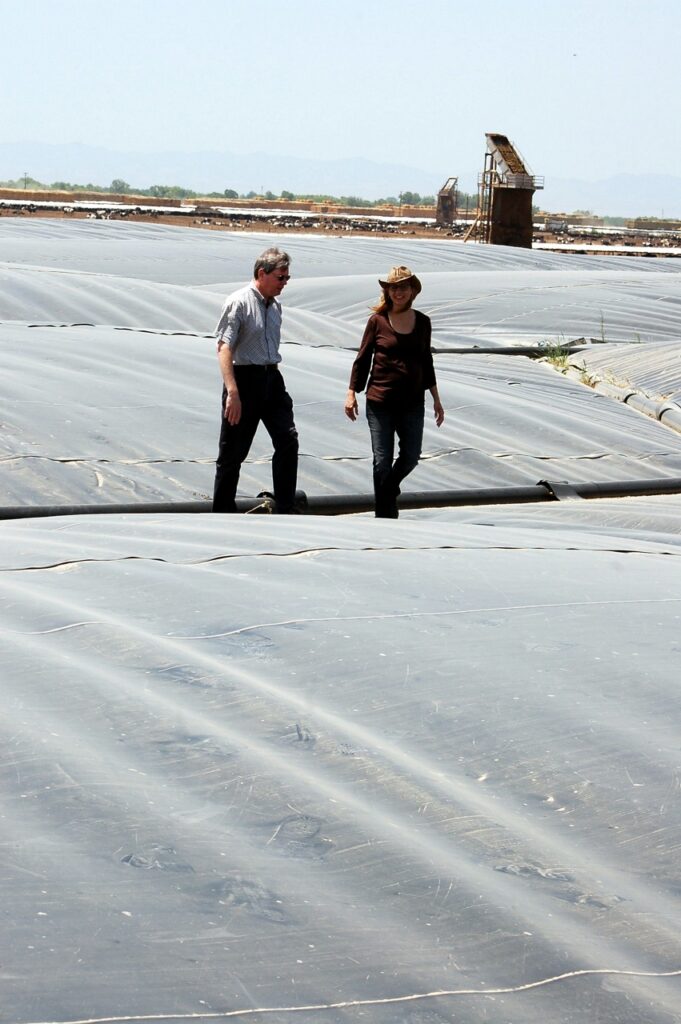
“When you go out to a factory farm and put a tarp over the lagoon and capture the biogas and then build a refinery to upgrade that into biomethane, not only have you left in place the entire system of liquefying manure, putting it in lagoons and then disposing of that onto fields, you’ve entrenched and exacerbated that system,” said Lobdell.
“That system” refers to large dairies, which are the only operations which can afford to put in these pricey digesters. In California, the average digester costs over $5 million, and government grants only cover up to half. Credits from selling biogas can help with the digesters’ price tag. However, small dairies often do not need digesters because they let their lower volumes of manure decompose on pasture with far less methane released. But LCFS credits leave these operators even further behind large dairies.
“Now they have to compete against these mega dairies with 20,000 head of cattle who are now producing supposed renewable natural gas as yet another revenue stream,” Lobdell said.
Dairies Looking Past Digesters to Reduce Methane
Some argue that biomethane can be useful in limited applications. “On its face, [biogas] is a good goal and we should continue to look at ways to reduce methane emissions,” said Heeringa. “But if it’s being used to justify the continued expansion of end uses of gas, we’re really running in place on some level.”
Heeringa also says that a massive increase in biomethane production, in line with gas utilities’ plans for decarbonizing their pipelines, is not cost effective. “The cost of putting in digesters, creating new pipelines to feed into the main pipeline system — they really do start to escalate. And, meanwhile, the costs, you know, the cost of clean electricity — wind and solar and battery storage and all that stuff continues to drop.”
SoCalGas’s pledge to replace 20 percent of its gas supply with biomethane relied on a report from the University of California, Davis, which estimated gas from dairy digesters would need to cost $33.50/mmBTU in order to bring one billion cubic feet of it online economically. In late 2022, gas in California cost $13.76/mmBTU.
Replacing that much of the SoCalGas’ supply with biomethane by 2030 will require a level of production that the state’s dairy industry is not preparing for. Currently, there are 131 digesters on dairies across the state, and with the already allocated funding, Boccadoro anticipates the state is on track to have 250 digesters by 2030. “We’ve never anticipated there’d be more than 250 [digesters] operating in the state,” said Boccadoro.
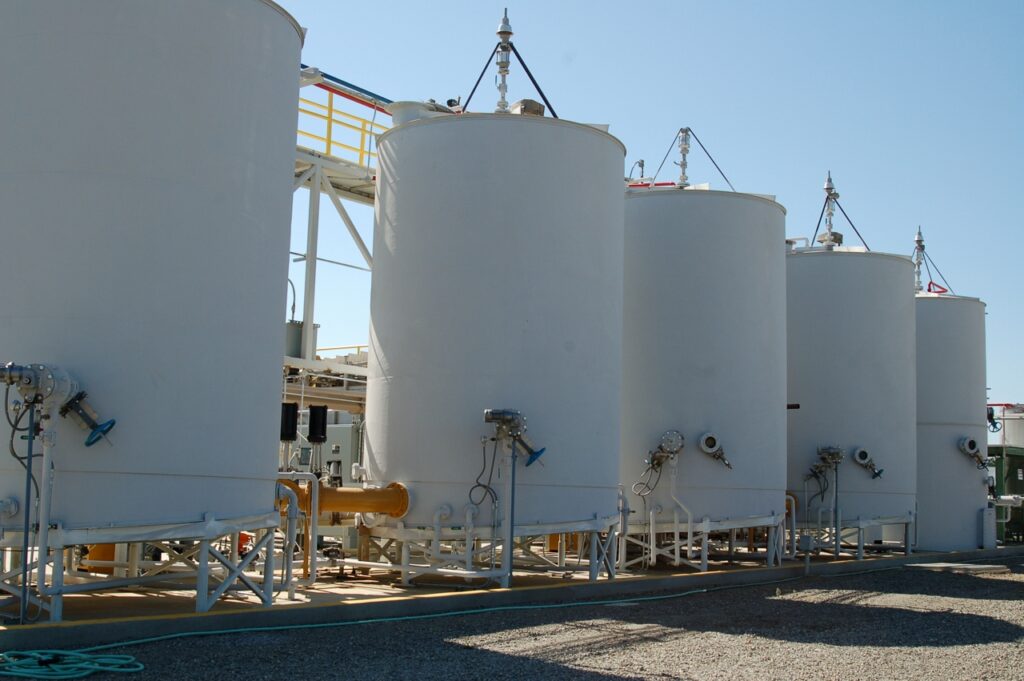
Beyond those planned digesters, new advances in alternative manure management practices may change how dairies reduce methane emissions — and not just by siphoning them away in gas pipelines. In September, the U.S. Department of Agriculture awarded the California Dairy Research Foundation and its partners Dairy Cares and the California Milk Advisory Board $85 million for “climate smart” manure management practices.
These new “alternative manure management practices” (AMMP) seek to avoid methane production from manure in the first place through vermifiltration and Sedron’s VARCOR technology. Digesters are able to reduce methane emissions from manure by 80 percent; vermifiltration worm fields that filter manure and VARCOR’s mechanical vapor recompression offer comparable reductions. AMMP can also reduce methane emissions on both large and small dairies. Through 2022, traditional ways to avoid methane emissions from manure were only responsible for about 10 percent of California’s agricultural methane emissions reductions. Digesters were responsible for the remaining 90 percent. Boccadoro is confident that the new technology will take away some of the burden on digesters to capture methane.
Avoiding methane production from manure in the first place no doubt complicates natural gas utilities’ plan to rely on biomethane from dairies. But then, Boccadoro says, “The idea that we’re going to decarbonize the natural gas system in California is a pipe dream. It’s a utility executive and shareholder pipe dream.”
The post The Natural Gas Industry Sees Cow Manure Gas as the Key to a Net Zero Future appeared first on DeSmog.











